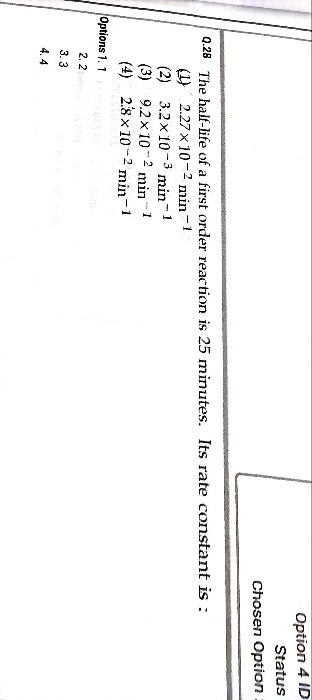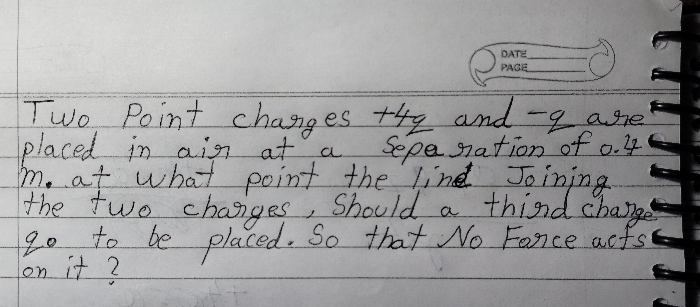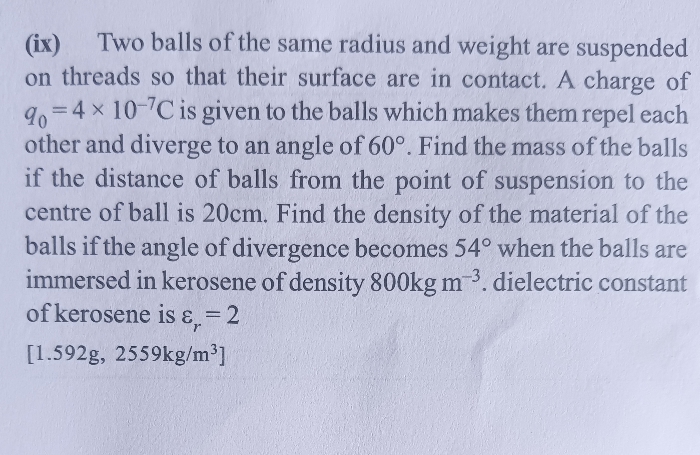CBSE Class 12-science Answered
Explaination of derivation of drift velocity and potentiometer
Asked by sayleeashelar | 22 Jul, 2019, 08:28: PM
In metallic conductors, an electron will suffer collisions with the heavy fixed ions, but after collision,
it will emerge with the same speed but in random directions. If we consider all the electrons,
their average velocity will be zero since their directions are random. Thus, if there are N electrons and
the velocity of the ith electron (i = 1, 2, 3, ... N) at a given time is vi, then
the velocity of the ith electron (i = 1, 2, 3, ... N) at a given time is vi, then
 .............................(1)
.............................(1)Consider now the situation when an electric field is present. Electrons will be accelerated due to this
field by,
field by,
a = -eE/m ............................... (2)
where –e is the charge and m is the mass of an electron. Consider again the ith electron at a given time t.
This electron would have had its last collision some time before t, and let ti be the time elapsed after its last
collision. If vi was its velocity immediately after the last collision, then its velocity Vi at time t is
collision. If vi was its velocity immediately after the last collision, then its velocity Vi at time t is
 ........................(3)
........................(3)since starting with its last collision it was accelerated with an acceleration given by Eq. (2 ) for a time interval ti.
The average velocity of the electrons at time t is the average of all the Vi’s.
The average of vi’s is zero since immediately after any collision, the direction of the velocity of an electron is completely
random. The collisions of the electrons do not occur at regular intervals but at random times.
random. The collisions of the electrons do not occur at regular intervals but at random times.
Let us denote by τ, the average time between successive collisions. Then at a given time, some of the electrons would have spent
time more than τ and some less than τ. In other words, the time ti inEq. ( ) will be less than τ for some and
time more than τ and some less than τ. In other words, the time ti inEq. ( ) will be less than τ for some and
more than τ for others as we go through the values of i = 1, 2 ..... N. The average value of ti then is τ (known as relaxation time).
Thus, averaging Eq. ( ) over the N-electrons at any given time t gives us for the average velocity vd
 ...........................(4)
...........................(4)Above equation tells us that the electrons move with an average velocity which is independent of time, although electrons are
accelerated. This is the phenomenon of drift and the velocity vd in Eq. (4) is called the drift velocity.
accelerated. This is the phenomenon of drift and the velocity vd in Eq. (4) is called the drift velocity.
Answered by Thiyagarajan K | 23 Jul, 2019, 03:06: PM
Concept Videos
CBSE 12-science - Physics
Asked by dasrituparna1999 | 13 Apr, 2024, 06:56: AM
CBSE 12-science - Physics
Asked by dasrituparna1999 | 12 Apr, 2024, 09:26: PM
CBSE 12-science - Physics
Asked by mishrigupta19319 | 08 Apr, 2024, 06:28: PM
CBSE 12-science - Physics
Asked by madhav9119887644 | 07 Apr, 2024, 08:10: PM
CBSE 12-science - Physics
Asked by mishrigupta19319 | 07 Apr, 2024, 11:23: AM
CBSE 12-science - Physics
Asked by adityagalar2007 | 06 Apr, 2024, 01:06: PM
CBSE 12-science - Physics
Asked by amlanmcob | 06 Apr, 2024, 12:27: PM
CBSE 12-science - Physics
Asked by hussain221man | 05 Apr, 2024, 08:44: PM
CBSE 12-science - Physics
Asked by mishrigupta19319 | 05 Apr, 2024, 12:01: PM
CBSE 12-science - Physics
Asked by manishamunda787 | 02 Apr, 2024, 11:07: AM













